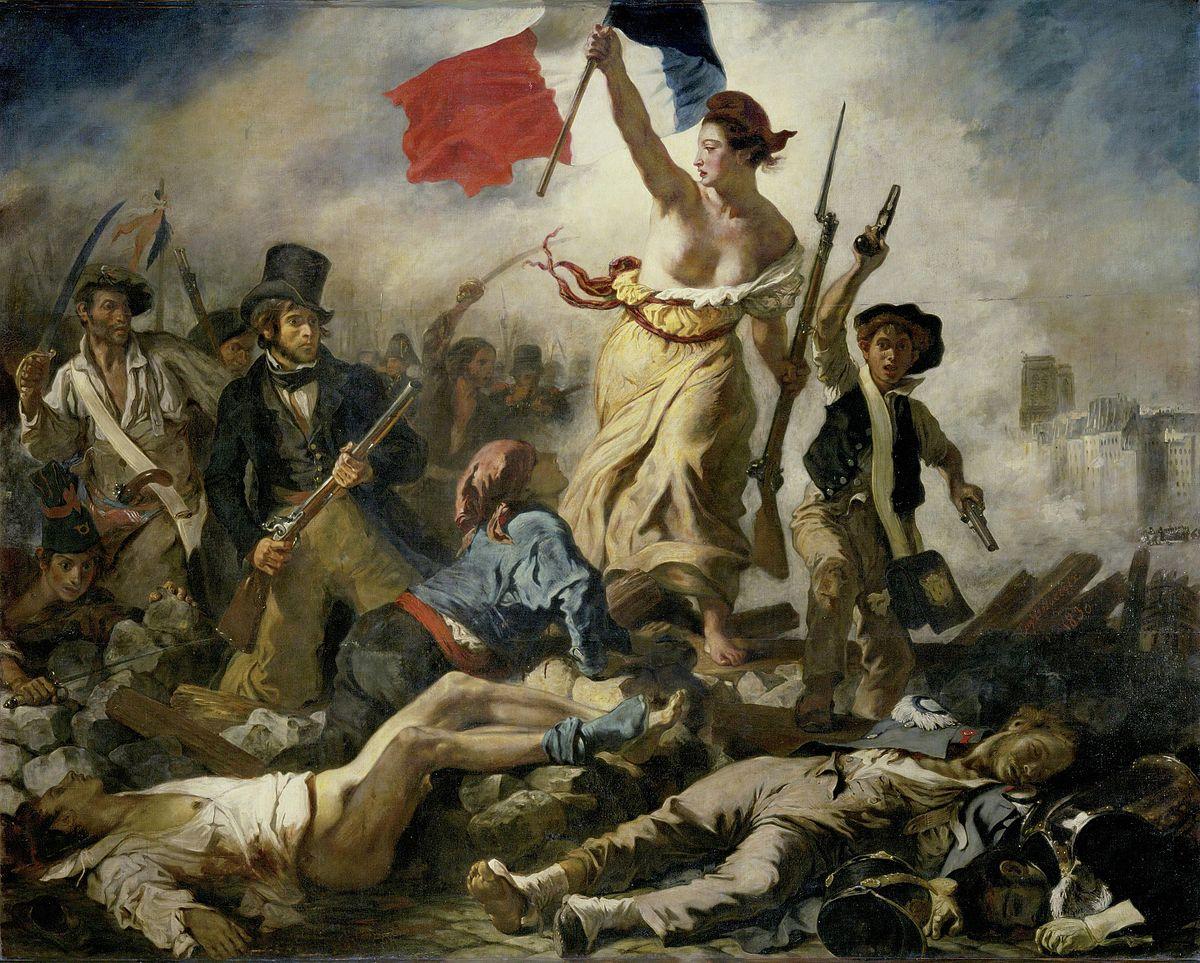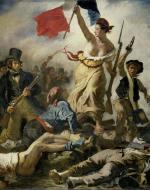Created by Jesse Dean on Tue, 02/08/2022 - 03:54
Description:
Liberty Leads The People is a remarkably famous painting that illustrates the tree day revolution that occured on July 27- 29 of 1830. The revolution began when King Charles x denied the people of France their rights. Delacroix voice his patriotis mthrough this piece even though he did not take part in the short revolution. He famously stated, " I may not have fought for my country, at least I have painted for her." Delacroix painted in an onorthodox manner as he was known touse contrasting colors and hues to portray a more vivid message, instead of the more muted and dull collor pallets that were favorable at that time.
On first glance we are struck with the composition fo the painting which draws our eye to Marianne, the Lady of Liberty herself. She is shown to be standing on top of a baracade and holds in one hand a tricolour flag and a bayonet in the other. She is the ultimate symbol of liberty, revolution and freedom. Her appearance at first glance is striking. The Phygian cap she wears has been symbolic since the time of the Roman's who gave them to newly freed slaves, an exaple of liberty. Her gown and posture are remonisant to statues that the Greeks and the Romans had builf for their most praised God's and Goddess's. Her stance alone represents democracy. We can see her influence over the crowd as she stands strong above the barricade with a young man looking up at her from the ground. She is the vision for the revolution. Holding both the flag and the bayonet symbolizes her voice of both teh revolution of the modern man and the ideology of liberty.
The colors of the flag are illustrated throughout the painting. We can see a faint flag on top of Notre Dame in the back right of the painting. We can also see the flag colors tied togethr from the rioters in the backround. Upon closer look we can see hints of all three colors from the revolutionaries on the ground. We see a red belt, blue jacket and white shrits all around. We can even see hints of the three colors from the sky above. The tricolor flag holds great meaning including, equality, brotherhood and modernization. This flag vastly differs from the white flag that was declared in France in the 17th century to represent purity.
When inspecting the different types of revolutionaries in the crowd, we can see some of notably lower class. The gnetlemen on the left side of the painting has on a dirty workshirt, loose trousers and a hankerchief tied around his waist to sucure his loose pistol. We can assume that this man was not a high society man. The younger boy beneath him is clinging on the pile of rocks, ready to throw them instead of holding a weapon. This could also represent the difference in class. The other gentlemen seems to be apart of a different social class. he wears a top hat and holds a shotgun in hand as he marches forward. We can assume that this revolution was one for everyone no matter your econmic status. Not only were there a variety of individuals who were involved in a common goal, but children as well. We can see three young boys in this painting. The most notable one is to the right of Lady Liberty. He holds two pistols and seems to be ahead of Lady Liberty, ready to fight. Some have suggested that this image of this boy was the inspiration for the character Gavroche i nthe famous novel, Les Miserables by Victor Hugo.
Works Cited
zygmont, Dr. Brian, "A-Level: Eugene Delacriox. Liberty Leading The People." Smarthistory. Febuary 8, 2002
https://smarthistory.org/delacroix-liberty-leading-the-people-3/
Zelazco, Alicija, "Libery Leading The People." Briticanica. June 14, 2008
https://www.britannica.com/topic/Liberty-Leading-the-People
Fisher, Allen, "Delacroix. Liberty Leading The People." EDUblogs. April 22, 1997 F
Copyright:
Associated Place(s)
Part of Group:
Featured in Exhibit:
Artist:
- Eugene Delacroix


